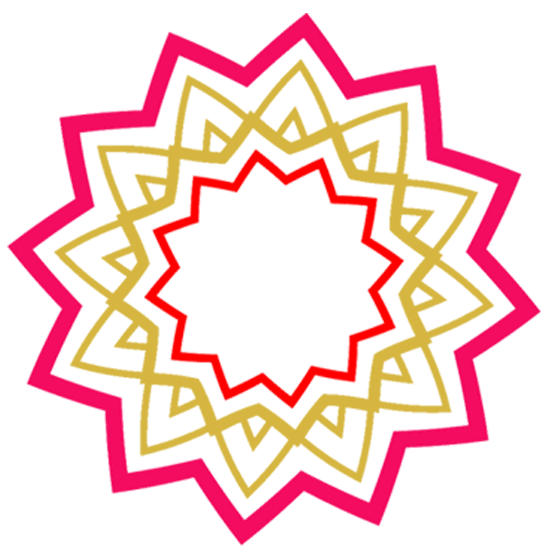Copywriting formulas can be tricky to master. But what if you could read this one blog post, and it would mean you can get better results from ALL your copy? Sound too good to be true? Well, guess what, it’s not!
Like every good dish needs a recipe, every good invention has been through a method. And every effective exercise routine has a program. So, you should be applying the same thought process to your copy. There’s a reason there are method’s that work. And copywriting is no different. The copywriting formulas you can use take out the guesswork and set you on the path to turning bad copy into good copy. By using formulas you can work out really quickly where you might be going wrong.

How Copywriting Formulas Work
Yes, copywriting is a way of getting your audience to act, but there are a lot of factors at play that influences that.
Do you struggle with storytelling in your copy, in your blog posts, in your sales pages for your business?
You can use copywriting formulas for that.
What about getting storytelling in your copy when you’ve only got 140 characters?
Copywriting formulas can do that.
And what about getting people to open your emails?
You guessed it, you can use copywriting formulas for that.
But, how about people taking action on your sales page.
Yes, you can use copywriting formulas for that as well.
They can all get you different goals for your content type and writing style.
The ABCs of Copywriting. Nonprofit Communications Report, states you can “advance your brand” and “engage your readers.” And that can only mean good things for you and your business.
“So what are these copywriting formulas?” I hear you say! “Give us the good stuff!” Ask and you shall receive. Here is a rundown of….pretty much all the best copywriting formulas you can use.
Read on…
Copywriting Formulas: Where to Start
As they say in The Sound Of Music, “Let’s start at the very beginning. It’s a very good place to start.”
Because, you have a formula you can apply to all of your copy, whether it’s:
- An email
- An ad
- A web page in general
- A blog post
- A video sales letter (VSL)
- A long-form sales page
- A tweet
That starting-point formula allows you to create the biggest impact with your copy.
And once you’ve got your messages sorted you start working through the elements of whatever it is you are writing.
This can be:
- Block of body copy
- CTA or button copy
- Headline for a page or your post itself.
- Testimonial
- Value proposition
- Bullet list
- Subject line (for emails)
And, when you have this in place you’re 90% of the way to complete, How good does that sound?
Then, you just need to get the persuasion stuff sorted. Get this fancy-schmancy copywriting formula on the go and you are going for gold.
PLEASE NOTE: Copywriting formulas are all very well. But unless you know WHO your client is, and you have done research on what makes them tick, what their hot buttons are, they are not going to work NEARLY as effectively.
The research is key. Stat.
So, with that said, let’s get stuck in!
Copywriting Formulas: The Before and After Bridge
This is where you describe a problem, then describe a world where that problem doesn’t exist, and explain how to get there.
Before – Here’s your world
After – Imagine what it’d be like, as your problem is solved
Bridge – Here’s how to get there
This is so simple and can be used for your writing, or your speech. Use it in your blog post intros, social media updates, and emails.
Here is a headline example from somewhere I used to work, www.dailymail.com. It demonstrates how the ‘BAB’ formula can work:
This works because:
It has everything you could ask for in copywriting. Check out the strong, emotional language. You have all the information you need to give you context. And you have a hook that leaves you curious about clicking through.
Problem, Agitate, Solution (PAS)
This is where the writer, that’s you, introduce a problem the reader experiences, use emotional language to hammer the issue home, then offer them a solution.
It’s easy to use for even novice copywriters to use and has the ability to quickly turn your prospect’s problems into powerful copy. Straight forward, and easy to implement.
Copywriting Formulas for Storytelling
This formula isn’t quite a formula. However, Lou Hoffman, CEO of PR firm The Hoffman Agency, said his vote is for this anecdote because journalists use it in their stories, like this one.
And as a former journalist, I can tell you that storytelling is essential.
We’ve been telling each other stories for hundreds of thousands of years. It’s in your DNA. And it’s part of your evolution. This is what makes it such a successful copywriting technique,” he said.
Take your landing page for example. Your main character is your customer. The conflict they face is their pain point. So, what’s the resolution, or happy ending to the story? Your product or service of course.
You can also make your company or product the main character. Your conflict is your years of struggle to get your product to where it is today.
The resolution or happy ending is when you finally had your ‘aha’ moment.
This is what is used on a lot of sales pages. And it means you can be the solution to your client’s problem.
But Powell added that storytelling can also be about the company or the person selling the product.
I love seeing this at work with Tom’s shoes. One of their shops is just down the road from me.
When in Argentina back in 2006, the founder, Blake Mycoskie saw first hand the hardships faced by children growing up without shoes.
On his bio page, it says it’s what motivated him to set up his: “for-profit business that was sustainable and not reliant on donations. Blake’s vision soon turned into the simple business idea that provided a powerful foundation for Toms.”
This is the power of storytelling in action.
The 5-Point Copywriting Formula
You can use this on your lead-gen and landing pages and it’s quite simple. It’s attributed to Jack Lacy.
- What will you do for me if I listen to your story?
- How are you going to do this?
- Who is responsible for the promises you make?
- Who have you done this for?
- What will it cost me?
If you run through these points you can answer more or less every question your potential client will throw at you.
Attention, Interest, Credibility, Proof, Benefits, Scarcity, Action, Warn, Now (AICPBSAWN)
Yes, this is actually seen as one of the copywriting formulas. The acronym stands for (Buffer explains it very well):
Attention – Biggest benefit, biggest problem you can solve, USP
Interest – Reason why they should be interested in what you have to say
Credibility – Reason why they should believe you
Proof – Prove what you are claiming is true
Benefits – List them all
Scarcity – Create scarcity
Action – Tell them precisely what to do
Warn – What will happen if they don’t take action
Now – Motivate them to take action now
Here’s How To Implement It
While this seems quite complex and you could only use it for a long page, you can also use it in the following way on your website:
Hero section:
Attention: Headline
Interest: Subhead and paragraph or bullets
Credibility: Testimonial and row of client logos
Proof: A captioned screenshot demonstrating the work
Benefits: What the service or product can do to change the reader’s life
Then you move to the close:
Scarcity: Limited time only etc
Action: CTA or button
Warn: Single click-trigger below CTA
Now: Short testimonial from person who’s glad they acted fast
That’s not very long, but you do cover off all of the key parts of this useful formula.
Stop, Look, Act, Purchase SLAP
I love this one, and the name really does sum up what you are trying to achieve.
if you are selling something relatively inexpensive to sell, SLAP works like a shorter page.
Here’s how it works.
Stop the prospect
Make them look (i.e., read)
Then make them act
Get the purchase
Here, going for the sale is the action. You can keep “act” and “purchase” together. SLAP works well for offers like Groupon deals.
The 4 U’s – Perfect for Social Media
This stands for:
Useful – Be useful to the reader
Urgent – Provide a sense of urgency
Unique – Convey the idea that the main benefit is somehow unique
Ultra-specific – Be ultra-specific with all of the above
This is a great formula to use on your Twitter headline. It’s actually great for all your social media. Why? Because the elements of urgency and specificity fit small amounts of text. Get this right and your social media marketing will reap you huge rewards,=.
Here is an example:
Features, Advantages, Benefits (FAB)
This really is FAB! It’s tried and tested and covers the well, benefits.
Here’s how it works:
Features – What you or your product can do
Advantages – Why this is helpful
Benefits – What it means and how it can change the readers’ life
One of the principal teachings in copywriting is ‘Focus on benefits, not features.’
Copywriter Joe Vitale phrases this one:
You get this…and the product does this…so that you get this…
Attention, Interest, Desire, Action (AIDCA)
Don’t you just love these acronyms?! This one works as follows:
Attention – Get the reader to focus and think about getting away from their boring life
Interest – Engage their mind with unusual info
Desire – Tug at their heartstrings so they want to use/ buy what you’re offering
Action – Tell them to take the next step
Copywriting Formulas: Attention, Interest, Desire, Conviction, Action (AIDCA) and (IDCA) Interest, Desire, Conviction, Action
These next two are just variations on the above:
AIDCA is:
Attention
Interest
Desire
Conviction
Action
This adds in the ‘conviction’ to add something special to the close.
It can move that reader who is more skeptical to a point of purchase.
You can do this by offering proof as follows.
- Testimonials
- Endorsements
- Statistics, data points or figures
- Demoes
- Guarantees
With IDCA, you take the ‘attention’ from the beginning. This works if you already have their attention, and you can hold it by increasing their interest.
You can use these formulas when you are moving someone from an email to an ad. When you have them on your email list, so you have their attention. Then you don’t need their attention again.
So when might you use IDCA over AIDCA?
When you’re driving from an email or an ad, where you’ve already grabbed the prospect’s attention. The landing page may not need to grab attention again. So you go straight to interest.
Qualify, Understand, Educate, Stimulate, Transition (QUEST)
This is all about demonstrating what you are offering is ‘ideal for’ your customer.
QUEST starts by qualifying the prospect (ie, saying it’s for you if:
Qualify the prospect
Understand where they are in their journey and how you get that
Educate them on how they can do something a better way
Stimulate them so they want that better way you can offer
Transition them from where they are to being your customer
Check out this old-school ad by Gene Schwartz (an amazing copywriter) that illustrates how QUEST can work:
The 4 C’s
This formula looks at the following aspects to make your copywriting compelling:
Clear: Your copy must be understood by everyone. Did you know the average reading age of an American is 12-14 years old? Do this by using small words, short sentences, headers, and bullet points.
Concise: Get your information over in the fewest possible words.
Compelling: Your writing also need to be interesting to your reader. Do this by focusing on their needs, problems, and desires.
Credible: Use customer testimonials and offer data to do this.
Attention, Advantage, Prove, Persuade, Action (AAPPA)
Victor O. Schwab, came up with this as one of the copywriting formulas he used, and it focuses on proof.
First you grab the reader’s attention
Show them the advantage(s) of what you offer
Prove what you’ve just told them
Persuade – get them over the line
Move them to take action
This can sometimes be tricky because you are telling your customer the advantage of your product or service, but you aren’t addressing their problem.
So you can look at it in a different way and use it as follows (this one comes courtesy of the amazing Jo Wiebe at Copyhackers:
Copywriting Formulas: Problem, Advantage, Proof, Persuade, Action (PAPA)
Problem
Advantages of solving the problem
Proof that you can solve it
Persuade
Move them to take action
Awareness, Comprehension, Conviction, Action (ACCA)
As copywriting formulas go, this is a great one if you are trying to raise awareness of a problem (remember the Toms example earlier? He also uses ACCA because he is making the world aware of the problem faced by children in Argentina.)
This goes as follows:
Raise awareness about a problem
Increase comprehension of the problem by explaining what it is
Create the conviction in your reader to do something about the problem they are facing
Call your customer to action
Copywriting Formulas: The 4 P’s
Credited to Henry Hoke Sr., it’s all about offering a promise, and fulfillment to your reader:
Picture – paint the scene for your reader and outline in detail their existing pain or give them a clear vision of their aspirational future
Promise – this is where you tell them your solution will end that pain or make that wonderful future a reality
Prove – here you show your promise is for real. What consequences do you face if you don’t keep your promise? Who has resulted in benefitting from your promise, and how? Here you also show skeptics your solution will mean the promise is kept
Push – then you move your reader to take action
Ray Edwards (whose course I have taken and he’s awesome) uses this version
Problem
Promise
Proof
Proposal
Edwards replaces “picture” with “problem.” And this copywriting formula works better for your home page or lead-gen page.
“Proposal” is also a lot softer than “push”. Yes, be assertive. But, don’t be aggressive.
The 5 Reasons Why Your Reader Says No
Finally, if you can address all of these in your writing, you will be on your way to getting your reader to saying yes.
These are the main five reasons someone will say no to something you are trying to sell them:
- I don’t have enough time.
- I don’t have enough money.
- It won’t work for me.
- I don’t believe you.
- I don’t need it.
The reason your reader isn’t taking action usually falls into one of these categories. If you keep these top of mind, and apply these copywriting formulas, and you can solve all of them, fantastic!
If you enjoyed reading this post, on copywriting formulas, check out my post on Holiday Season Copywriting: How To Write It The Right Way.



Recent Comments